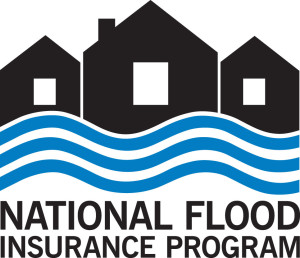Looking for new sales and opportunities in 2016? Here are a few of the top market sectors that just might deliver hot opportunities for agents and brokers in the property/casualty insurance industry this year.
Sky's the Limit
The drones sector is expanding rapidly with global expenditure on the emerging technology set to double to $91 billion over the next decade. Drones are now used for a range of activities including military, agriculture, public services, wildlife protection and research.
However, according to a Lloyd's report released last fall, "Drones Take Flight: Key issues for insurance," there are concerns around safety, security and surveillance that could pose significant risks to drone operators and manufacturers, and could hamper the sector's growth.
For insurance purposes, drones could present the properties of an aviation risk and/or a liability risk. "Drone manufacturers and users could face increasingly complex and high value risk exposures as the market continues to expand, and will need to work with regulators and insurers to ensure the technology is used safely and responsibly," the report said. "By providing the support needed for the systems to operate safely and with due regard for third party interests, the insurance industry has the potential to act as an enabler for the successful adoption of this emerging technology."
While the market for drone insurance is relatively small at present, Lloyd's believes that the projected expansion of the market and the diversity of potential applications will mean greater demand for insurance.
Last June, ISO developed new coverage and exclusion options for commercial drones to help insurers develop insurance programs for businesses that may use drones.
The new options address the growing liability exposures of commercial drones, which are already being used in package delivery, crop protection, and aerial photography. The ISO options modify coverage under ISO's Commercial General Liability and Commercial Liability Umbrella/Excess programs. Six core options are available under each program (three optional exclusions and three limited-coverage endorsements) and can be used to address a number of potential exposures with respect to bodily injury, property damage, and other potential liability related to drones.
There's also a potential for huge growth insuring personal drones.
In February the Federal Aviation Administration (FAA) reported there are now more registered drone operators in the United States than there are registered manned aircraft – some 325,000 registered drone owners compared to 320,000 registered manned aircraft and the number is steadily rising.
ISO's Jeff De Turris, vice president of coverage products and operations, told Insurance Journal that ISO is preparing to address personal drones this year in the homeowners coverage form. "We are looking at that one and thinking about how to address that within the homeowners policy as are some other lines of business that would certainly be impacted by drones, let's say on the commercial side as well as farm," De Turris said. "It's on our planning list... to have a response this year."
Cyber Insecurity
Not surprisingly, cyber is also a hot market. The insurance market has been inundated with cyber products for years, and 2016 will see this trend continue.
 The problem in this market is no longer capacity or lack of interest from insureds. Allianz Global Corporate Specialty predicts the cyber insurance segment will grow from $2 billion per year today to more than $20 billion over the next decade. Experts describe the segment as maturing – moving from the "toddler stage" to its "teenage years."
The problem in this market is no longer capacity or lack of interest from insureds. Allianz Global Corporate Specialty predicts the cyber insurance segment will grow from $2 billion per year today to more than $20 billion over the next decade. Experts describe the segment as maturing – moving from the "toddler stage" to its "teenage years."
"The interest in cyber is phenomenal right now. It's never been hotter...It feels like now it's reached that stage of maturity where we're seeing more and more buyers, we're seeing more and more market participants, and everybody's talking about cyber right now," said Graeme Newman, a director at CFC Underwriting in London.
The difficulty, according to the experts in this space, still lies with adequately insuring the risk. Insurers are a data-hungry group, but this risk is constantly changing. Data about claims or the biggest security exposures could be obsolete as soon as insurers have incorporated the information into their underwriting models.
And new security threats and risks are hitting insureds and insurers all the time, so underwriters need specific information to evaluate a risk.
"Most carriers are using some type of tool on the data side to evaluate and provide a snapshot looking at where security risk is coming from and where it's going – what is causing the malicious activity," said Douglas Thompson, Everest Re, and a panelist at the recent Cyber Advisen Conference in San Francisco. "But the data isn't complete. It doesn't show you what's inside of a network – we need to get that information directly from the client."
Insurers are trying to figure out how they can create the most robust policies for insureds, while also staying true to their own risk appetites. For the most part, carriers have had to develop their own underwriting models and evaluate each risk on a case-by-case basis because standardized risk models haven't been an adequate way to measure an insured's risk. That can make the job of the broker more difficult.
"From a broker and insurance perspective, modeling is very young at the moment," said Dominic Keller, assistant vice president at Willis Towers Watson and a panelist at the Advisen conference. "Clients come and say, 'We have a cyber risk and we want to know what it costs,' but cyber insurance products are a hybrid product anyway and there are a lot of different variables that determine the cost. The role of the broker is to communicate that as effectively as possible."
The industry isn't giving up on developing standards and models for this sector. In January, Lloyd's announced a set of common core data requirements for cyber risks with modeling firms AIR Worldwide and RMS, along with RMS' partner, the Cambridge Centre for Risk Studies.
Scott Stransky, manager and principal scientist for AIR, said the partnership has been highly effective already at gathering even more information on risks. AIR's cyber models are also updated every year to incorporate new data and emerging cyber risks, unlike property cat models that are updated every seven years. He believes as cyber standards and models are refined, underwriters will see how effective a modeling tool can be, particularly with large potential losses like business interruption.
"Companies need to be prepared for a big business interruption loss and do scenario modeling right now on what that would mean for them if that happened," Stransky said.
Flood Parity
 The insurance industry scored a big win in the effort to privatize the flood insurance market in early March when the U.S. House Financial Services Committed approved the Flood Insurance Market Parity and Modernization Act. The legislation seeks to clarify that private flood insurance is to be treated the same as federal flood insurance in cases where homeowners with federally-backed mortgages are required to buy the coverage.
The insurance industry scored a big win in the effort to privatize the flood insurance market in early March when the U.S. House Financial Services Committed approved the Flood Insurance Market Parity and Modernization Act. The legislation seeks to clarify that private flood insurance is to be treated the same as federal flood insurance in cases where homeowners with federally-backed mortgages are required to buy the coverage.
Supporters of the bill say it will encourage more private insurers to write flood insurance, providing an alternative for five million property owners who currently rely on the National Flood Insurance Program (NFIP), which is billions of dollars in debt.
The good news is private flood options are continuously coming to market, says John Dickson, president at NFS Edge Insurance Agency Inc., a subsidiary of Aon National Flood Services (NFS). Not every homeowner has the same needs and in many cases it comes down to educating the consumer about flood coverage options, he said. "For instance, policyholders may not be aware that they can supplement NFIP coverages with private options that allow a more customized coverage approach to address their individual needs."
Individual states, such as Florida and Pennsylvania, also have been encouraging private market competition.
"Our goal is to have 10 private insurers or more in Florida selling flood insurance in the next 24 months," said Florida State Senator Jeff Brandes.
The Pennsylvania Insurance Department created a "one-stop shop" webpage to make private market flood insurance more accessible to state residents.
In California, the Federal Emergency Management Agency (FEMA), which runs the NFIP, said there was a 12 percent increase in the number of flood insurance policies bought between August and November last year.
With less than 25 percent of homeowners in flood-prone Texas carrying flood insurance, according to the Insurance Council of Texas, there is plenty of potential.
Insurers hope flood insurance momentum will expand to the rest of the country, with help from U.S. lawmakers.
"The point here is, it's time to take the private sector involvement in flood insurance seriously and figure out what we need to do to make that happen," said Ben Walter, president and CEO of Hiscox USA.
Tenant Demand
Rental housing is in big demand. Although plenty of people still buy homes to live in, a lot of other people are choosing to rent. After the housing crisis, when some people lost homes and others were afraid to buy homes, demand for rentals shot up. Census data shows vacancy rates for rental units reached an all-time low last summer.
The demand isn't just for apartments. More people now want to rent single family homes. This trend is probably the most important thing happening in personal property, says Brian Sullivan, editor of Risk Information Inc. "The policy count for renters insurance has exploded in the last decade."
Sullivan says the trend is no longer just related to the economy. Today's demand is driven more by demographics.
"You have this huge portion of people in the Millennial generation, and they're not buying. They are renters," Sullivan said. The reasons Millennials choose to rent instead of buy are varied. "There's a thousand reasons," Sullivan says. "But the fact is that's where they are – they are staying renters."
According to Sullivan, agents face a challenge adapting to this new and growing trend in personal lines business. That point of entry to a valued, even high net worth client, used to be auto insurance but today that point of entry is often renters insurance.
While renters insurance is "a dog of a product" it will become increasingly important as the personal wealth of those insureds grows, he said.
"The average (renters insurance) premium in the United States is about $182," he said. "When you think about the commission, you are talking about $25." While it's not a "good product" from a sales standpoint, a renters policy could lead to a valuable customer and that should not be ignored, Sullivan says.
Carriers recognize the trend as well. "Insurers are rapidly throwing energy at renters products because they recognize its importance as an entry point to emerging households," he said. While innovation in renters' policy forms is not yet here, Sullivan says it is on its way.
The renter demographic of today is a profoundly more valuable customer than a decade ago, according to Sullivan. "All indications are that a decade from now, renters will be even more valuable than they are today," he said.
"Insurers are figuring out that they have to pay attention to a product line that previously they had no interest in," he added. Perhaps agents should, too.
Marijuana Mojo
 The legal marijuana industry continues to grow. Sales for both medical marijuana and recreational marijuana soared to $5.4 billion for 2015, up 17.4 percent from $4.6 billion in 2014, according to the ArcView Group.
The legal marijuana industry continues to grow. Sales for both medical marijuana and recreational marijuana soared to $5.4 billion for 2015, up 17.4 percent from $4.6 billion in 2014, according to the ArcView Group.
The gain was mostly driven by recreational marijuana sales, which grew to $998 million from $351 million in 2014, an increase of 184 percent.
The industry is set to experience even more growth as voters in several states, including California, are likely to take up the issue of recreational, or adult use, marijuana in 2016. According to ArcView, the demand for legal marijuana is expected to remain strong in 2016 with legal markets projected to grow to $6.7 billion, a 24 percent increase over 2015.
In 2015 alone, six states launched medical or recreational sales, which is equal to the number of new markets that emerged from 2011 through 2013. Another four states are poised to start medical cannabis sales this year or early next, while New York started its medical marijuana (MMJ) market in January.
Twenty-three states and the District of Columbia currently have laws legalizing marijuana in some form. Four of those states – Washington, Colorado, Alaska and Oregon – have legalized it for recreational use.
This year could be a watershed year for marijuana legalization. Seven states – California, Nevada, and Arizona in the southwest, and Massachusetts, Maine, Rhode Island and Vermont in the northeast – will be voting on legalization of adult use. Vermont is set to be the first state to legalize cannabis through the Legislature. Four states – Florida, Ohio, Missouri and Pennsylvania – are best positioned to advance medical laws in 2016.
The marijuana insurance market experienced a surprise setback in 2015 with the withdrawal of a Lloyd's of London, which said it would no longer support insuring marijuana operations of any kind until the drug is formally recognized by the U.S. government as legal. The market has been adjusting to the departure of Lloyd's.
"The MMJ insurance market is constantly changing. As one carrier leaves, another enters," said Galen Hayes, owner and founder of the Hayes Insurance Agency in El Sobrante, Calif., which has been providing insurance for the cannabis industry since 1997.
"When Lloyd's announced a roll-off of their book last year, the market was seriously shaken," Hayes said. But other carriers have entered the market since that time, filling the blanks, he says.
Prices have risen in the last year, he says, and there's capacity for the legal marijuana industry.
"We must stay on top of the markets to be competitive," said Hayes. "I expect growth in the MMJ arena again this year, as has been the case for many years. As more states legalize MMJ in some form, carriers must step-up and handle the risk."
Hayes says there are a handful of carriers preparing to enter the market soon although he couldn't name the carriers.
Hayes describes the legal marijuana market as both warm and hot. "Markets are hot when a new state comes on board, and warms a couple of years later," he said.
Hitching a Rideshare
With nearly 40 states either looking at or already regulating the ridesharing industry as of Feb. 23, according to R Street, insurers have accepted that ridesharing isn't going away and their drivers need proper insurance coverage. With new ridesharing services launching all the time the sales potential for this market is only growing.
A survey by the Rideshare Guy found that only one-in-five rideshare drivers have the required insurance. Another survey by NerdWallet that looked at the insurance choices of 1,022 rideshare drivers nationwide found that 77 percent have not purchased additional coverage on top of what their rideshare company provides. The opportunity for the industry is huge, as 40 percent of survey respondents say they are considering a policy in the next three months.
More companies have entered the rideshare insurance space or are expanding coverage into new states. Major personal auto carriers including Farmers, GEICO, Mercury, Allstate and USAA are now offering some form of ridesharing insurance. ISO introduced two new personal auto coverage options for rideshare drivers last April. The endorsements can be used by personal auto insurers who want to offer coverage to their clients participating in ridesharing services.
Rideshare expert Harry Campbell, who goes by the handle the Rideshare Guy, said drivers have difficulty, however, in figuring out how to protect themselves and how to ensure they're complying with each state's laws and regulations. Agents have an opportunity to be an important resource to this emerging industry. Agents should educate themselves on rideshare insurance policies, says Campbell. "So that when you do have Uber and Lyft drivers come to you, you can be ... a really good resource for them."
Comments
Add Comment